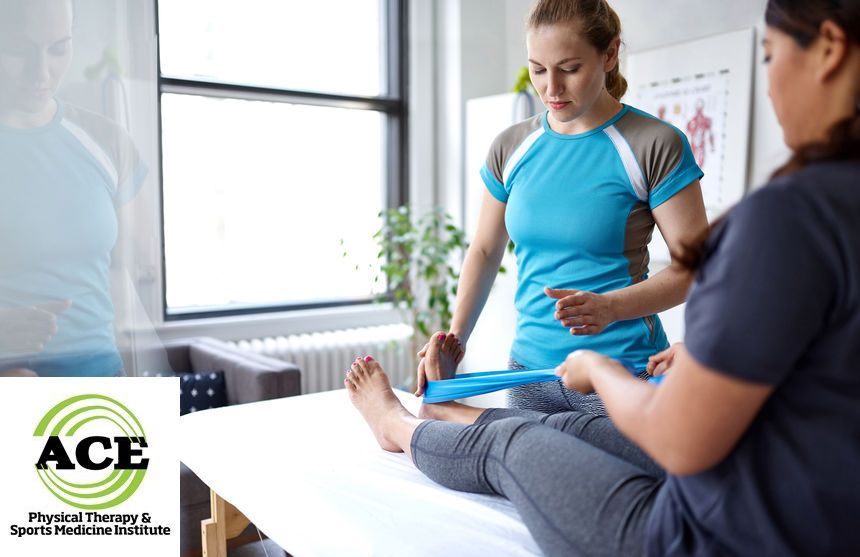DOES MUSCLE WEAKNESS CONTRIBUTE TO PLANTAR FASCIITIS?

Tid Bits of Info
- The use of a night splint to hold your ankle in a 90-degree angle can help to reduce the intensity of the acute symptoms of Plantar Fascia.
- Athletes suffer from plantar fasciitis more frequently than any other population.
- Supporting the medial arch with good arch support can help to reduce the forces on the plantar fascia.
- The recovery rate from the symptoms of plantar fasciitis is nearly 100% but it can take up to 18 months or more.
- Seek the advice and treatment of a Physical Therapist if you have heel pain.
Many people start their day with a stabbing pain in the bottom of the foot. This pain is not limited to the start; unfortunately, it may appear after exercise or may even persist throughout the day. Plantar Fasciitis can cause someone to walk with a limp and be miserable anytime that they have to put weight on their involved foot. The plantar fascia does not get injured too frequently but when it does become inflamed, it is very difficult to treat. Physical Therapists can help develop a treatment and prevention plan for those suffering from plantar fasciitis.
The plantar fascia is a thick, leather-like band of connective tissue that spans the bottom or plantar surface of the foot. The band attaches to the heel bone (calcaneus) and stretches across the mid-tarsal bones to the ends of the metatarsals. The plantar fascia inserts into the flexor tendons of the toes. When someone walks, the full-body weight has to be supported by the joints of the foot. The joints are supported in many ways but one of the most important stabilizing structures of the foot is the plantar fascia. When the foot accepts the body weight and transitions through the gait cycle to midstance, the arch “flattens” out (in most people), and the plantar fascia is stretched. As the person continues through the gait cycle and the heel starts to leave the ground the plantar fascia “snaps” the arch back to its original position, which is known as the Windlass Mechanism (read more on this mechanism at www.ACE-PT.org). When the plantar fascia is stretched and “flattens” out there is a significant pull on the calcaneus and this can lead to plantar fasciitis in some people.
Numerous studies have attempted to correlate a decrease in lower extremity muscle strength and plantar fasciitis development. There is no clear evidence that one muscle in particular can be the culprit of the development of plantar fasciitis. Instead, the results of most studies reveal that numerous muscles that help to control the movement of the foot and ankle are weaker in an individual that suffers from heel pain and plantar fasciitis. It appears that both intrinsic and extrinsic muscles that function to move and support the foot/ankle complex can become weaker in a person who suffers from plantar fasciitis. In most studies, the muscles that help to invert and evert the ankle are much weaker in a person who is experiencing the symptoms of plantar fasciitis. Great toe and lesser toe flexion were weaker in most of these patients, as well.

Clinically, it is important to assess the overall strength of the entire lower extremity that is involved. The lack of adequate hip strength can lead to excess motion in the lower extremity that can place too much stress on the foot and cause plantar fasciitis. Ultimately, the healthcare professional that is developing a treatment plan for plantar fasciitis needs to implement a program that addresses the acute symptoms but more importantly addresses the real problem. The real problem can be abnormal gait mechanics secondary to weak musculature in the involved lower extremity.
Physical Therapists are some of the most qualified licensed healthcare professionals to treat plantar fasciitis symptoms. These experts are skilled at assessing one’s gait and developing a treatment protocol that will address the cause(s) that lead to improper mechanics that are leading to plantar fasciitis.
This condition is painful and debilitating when it is not treated properly. Many seek the quick fix of a steroid injection, but without a sound exercise routine to address the weakness throughout the involved lower extremity, the symptoms will most likely return in the near future.
If the bottom of your heel hurts don’t wait for it to improve. Seek treatment from a Physical Therapist. The condition can last a long time and if it is not treated properly, the symptoms might vanish temporarily but will most likely return as soon as your activity level returns to normal. Strength training of the musculature of the involved lower extremity appears to be one of the keys to resolving the symptoms forever.
























